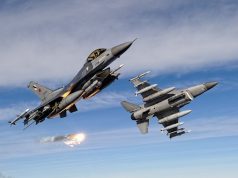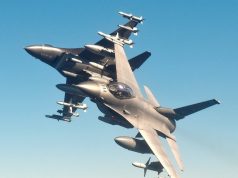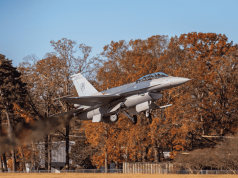Denmark’s defense ministry revealed it has made the decision to extend the service life of its F-16 fighters amid the deteriorating security situation caused by Russia’s invasion of Ukraine.
The defense ministry said it would extend the F-16 fleet in service to 2027, contrary to previous plans of beginning the drawdown with the arrival of the first of the new F-35 fifth-generation stealth fighters.
The Royal Danish Air Force has flown the F-16 since the 1980s. There are currently 44 F-16s in the Danish fleet, with some 30 operational airframes.
The first F-35 is set to arrive in Denmark, at the Skrydstrup air base in 2023, which means Denmark will be operating two fighter aircraft simultaneously for four years.
As explained by the defense ministry, the current security situation in Europe means that the planned phasing out of the F-16 capability would be associated with significant operational and security risks.
“Putin’s aggression on Ukraine has changed Europe and the threats that the defense ministry faces. Denmark takes great responsibility for peace and security in the fight against Putin’s threats,” Denmark’s defense minister Morten Bødskov said.
“That is why we are increasing the armed forces’ ability to contribute to Putin’s deterrence. The security policy situation in Europe is fundamentally different than in 2016, when the fighter agreement was concluded. It requires action now. The defense of NATO territory to the east is more central than at any other time in recent times. Therefore, we are extending the operational capacity of the F-16 while the new F-35 aircraft are being phased in.”
The defense ministry noted that the slower-than-planned phasing out of the F-16 would not affect the introduction of the F-35 into service. Keeping the older aircraft in the air for longer than initially planned will come with a price tag of 1.1 billion Danish krona (approx. $155.4 million). The additional funds are expected to cover expenses for fuel, purchase of spare parts as well as retention and recruitment of personnel, the defense ministry said.



























